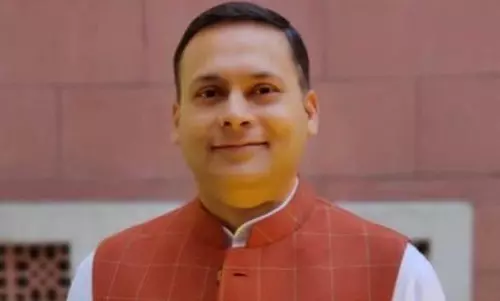
Awakening in public schools sector
text_fieldsKerala marked a grand beginning of the new academic year with admission festivals ('praveshanolsavam') on the same day (6 June) for all classes from Std-1 to 12. The celebrations were remarkable with the active participation of all stake-holders, including parents, students, old students, teachers and local government officials. This can be viewed as a continuation of the impressive advances made by the state in the public school sector – state-funded institutions comprising government and government-aided schools.
The once ramshackled and mostly discarded public schools have since recently been witnessing a rush of admission-seekers. A good portion of parents who uused to run after private Englilsh-medium schools have now turned to public schools for their wards. This vibrance of the sector is mostly thanks to the creative interventions over the past decade and a half by the governments, regardless of political hue.
An interesting aspect of this phenomenon is that the presence of private, unaided English-medium schools has played a crucial role in making public schools resurgent to this scale. In other words, with the mushrooming of private/unaided schools and their attracting students, that created a situation thrreatening the job security of those working in public schools. That put an end to the era when the staff could sit cosy, make a perfunctory performance from the bell ringing in the morning to its repeat in the afternoon, and go home with their salary safely guaranteed. It created a situation of 'no students,no school', 'no quality,no students'. That was sufficiently realized by both the government educational authorities and the aided schools.
The situation also saw the emergence of parents particular about quality. In a way, the private institutions were driving the public schools to a stage with no option other than to change. That is to say it was the compulsions of the market that played the biggest role in improving the public schools. It would be ridiculous for any political movement or front to claim credit for this. We could better describe the awakening in this sector as a sub-product of the dynamism of the market. And of course, government interventions have contributed by acting as catalyst of this dynamism.
The current government has made laudable efforts in improving the facilities in public schools and in making modern technology and tools available even to students from ordinary families. It is rolling out diverse projects including 43,329 hi-tech classrooms at high school level, 9,941 hi-tech classes at primary level, a learning portal to improve study methods, mechanisms for academic monitoring, merit festivals, a special project named 'Shraddha' for those backward in learning and a project to make 141 schools centres of excellence. The criticism that curriculum had suffered from a somewhat anarchic nature, has more or less led to a correction through the curriculum reforms during the term of the last government.
The current government is also implementing the curriculum without bringing about much change in it. It is true that even now the education department has people bent on including dogmatic elements in the curriculum. But meddling by such elements will only vitiate the public education scene. The challenge to be taken up by education department is to implement in a people-friendly manner, an education programme based on social commitment, pluralism and democratic values.
The Central government has granted approval for plans costing Rs 897 Crore during 2019-20 as part of the Samagra Shiksha Kerala project, integrating all the functions of public schools sector. Although this amount is insufficient when placed against the Rs 1,460 Crore demanded by Kerala, it is a relief that the Centre approved a much higher figure than last year's. The factor that made the Centre increase the allocation, is the level of achievement by the state in project implementation.
The projects implemented last year - such as science patham, science park, bio-diversity park, drama camp for girls and schemes to enhance linguistic competence - won special praise from the Centre's Project Approval Board. It will take another week to get the accurate figures of enrolment in public schools this year. There is every possibility of an increase being registered. At the same, the drastic fall in the state's birth-rate is likely to affect enrolment too. But that is a phenomenon to be addressed by the state in general, rather than an education-related issue. The awakening in public school education vouches for the fact that if all sections of the society come together for an endeavour, it can create wonders. And may the government be able to continue it with greater energy.

















